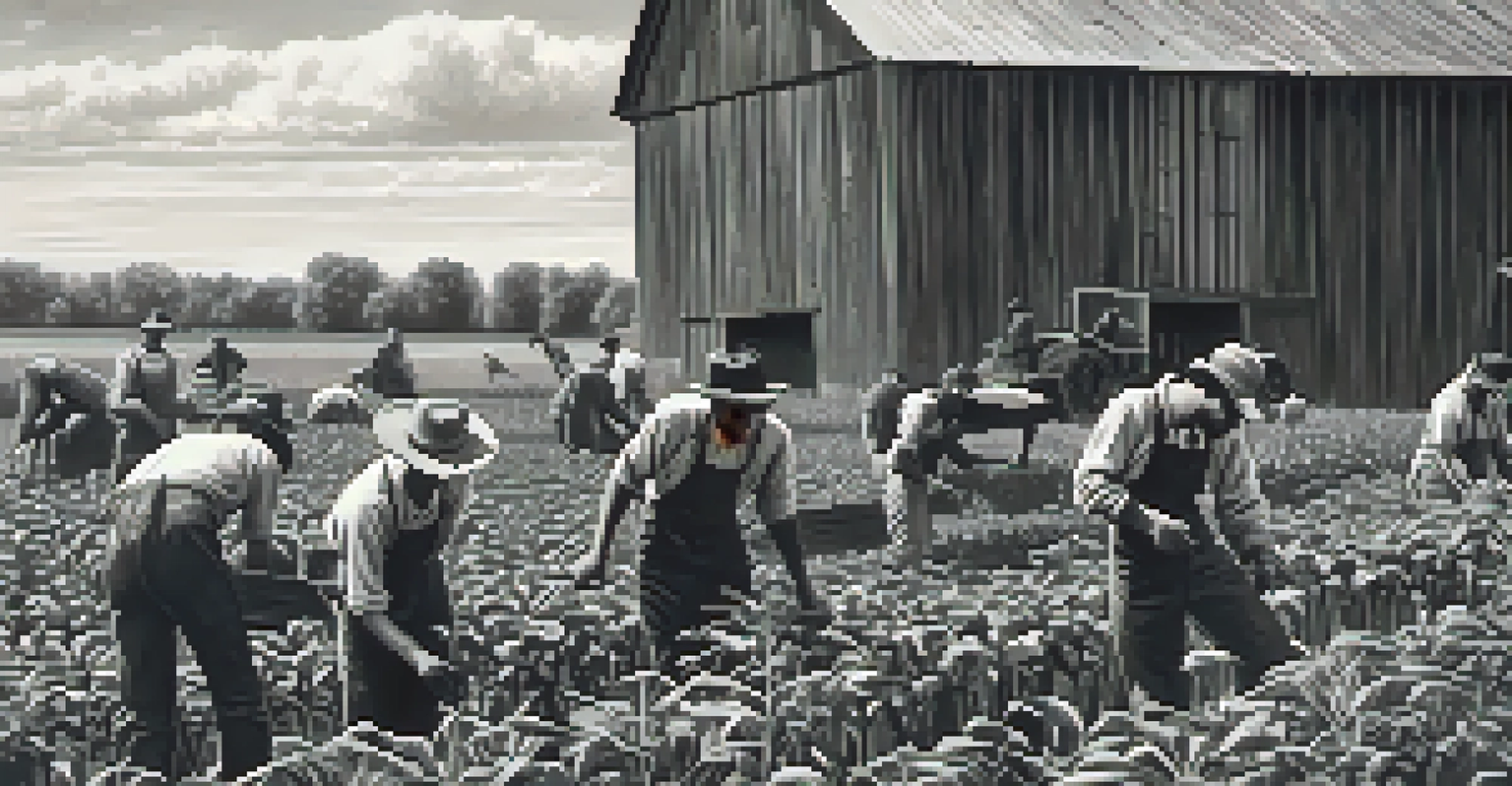The Evolution of Campus Life at Michigan State University

The Early Days: A Look Back at MSU's Foundations
Michigan State University, founded in 1855, began as an agricultural college, rooted in the land-grant movement. This early focus on agriculture shaped not only the curriculum but also the student experience. The campus was a simple, rural setting where students engaged closely with the land and each other.
Education is the most powerful weapon which you can use to change the world.
In the late 19th century, the campus lifestyle was characterized by a close-knit community atmosphere. Students participated in farming, cooking, and various trades, fostering a sense of teamwork and cooperation. This hands-on education instilled values of hard work and resilience among the early Spartans.
As MSU grew, so did the diversity of its student body and academic offerings. The transition from an agricultural college to a comprehensive university began to change the social fabric of campus life, paving the way for new traditions and student organizations.
The Impact of World War II on Campus Culture
World War II brought significant changes to Michigan State, as many students left to serve in the military. This created a shift in campus demographics, with returning veterans bringing different perspectives and experiences. Their presence led to the establishment of new programs catering to adult learners and veterans.

The GI Bill played a crucial role in this transformation, allowing many veterans to pursue higher education. This influx of students contributed to a more diverse and vibrant campus culture. Social organizations, clubs, and athletic events began expanding rapidly, providing students with various ways to connect and engage.
MSU's Rich Historical Roots
Michigan State University has evolved from its agricultural college origins in 1855 into a diverse and comprehensive institution, shaping the student experience through community and hands-on education.
The sense of camaraderie fostered during the war years continued to influence campus life in the post-war era. The university became a melting pot of ideas and backgrounds, spurring a spirit of inclusion that remains a hallmark of MSU today.
The 1960s: A Decade of Change and Activism
The 1960s marked a pivotal time for Michigan State University, as students became increasingly vocal about social and political issues. The campus buzzed with activism, from civil rights movements to anti-war protests, shaping a new generation of engaged citizens. This era saw students advocating for change not only at MSU but across the nation.
Education is the most powerful weapon which you can use to change the world.
The university responded to these movements by expanding student governance and creating forums for discussion. These changes empowered students to have a voice in university policies and contributed to a more dynamic campus environment. The emphasis on student rights and responsibilities became a defining aspect of MSU's culture.
As a result, the 1960s left a lasting legacy of activism and engagement at Michigan State. The spirit of this decade continues to inspire students today, encouraging them to challenge norms and advocate for social justice.
Modernization and Technology: Shaping Campus Life
As technology advanced, Michigan State University embraced modernization, significantly impacting campus life. The introduction of computers and the internet transformed how students learn and interact. Online resources and digital communication became vital tools in academic success.
The university's commitment to innovation is evident in its investment in smart classrooms and research facilities. These advancements provide students with cutting-edge tools to enhance their learning experience. Moreover, technology has fostered collaboration among students, both academically and socially.
Embracing Diversity and Inclusion
Recent efforts at MSU focus on fostering a welcoming environment for a diverse student body, promoting cultural understanding through various programs and initiatives.
However, this shift has also introduced challenges, such as maintaining a sense of community in an increasingly virtual world. MSU continues to find a balance between leveraging technology and fostering meaningful in-person connections among students.
Diversity and Inclusion: A Growing Focus at MSU
In recent years, Michigan State University has prioritized diversity and inclusion as integral aspects of campus life. As the student body becomes more diverse, the university has made concerted efforts to create an environment where all students feel welcome and valued. This commitment is reflected in various programs and initiatives designed to support underrepresented groups.
Cultural organizations and events have flourished, celebrating the rich tapestry of identities present on campus. From cultural fairs to discussions on social justice, these activities promote understanding and appreciation among students. MSU's focus on inclusivity enriches the overall campus experience and prepares students for a global society.
As MSU continues to evolve, the emphasis on diversity and inclusion will remain vital. This commitment not only enhances campus life but also contributes to a more equitable future for all students.
Student Life: Balancing Academics and Extracurriculars
Today, student life at Michigan State University is characterized by a balance between academics and extracurricular activities. With over 600 student organizations, there’s something for everyone, from academic clubs to recreational sports. This variety allows students to explore their interests and develop leadership skills outside the classroom.
The importance of extracurricular involvement is underscored by research showing that students who engage in campus activities tend to perform better academically. These experiences foster personal growth and help create lifelong friendships. MSU encourages a holistic approach to education, recognizing that learning occurs both inside and outside the classroom.
Balancing Academics with Activities
Student life at MSU emphasizes a holistic approach, encouraging involvement in over 600 organizations to enhance academic performance and personal growth.
Moreover, the university provides numerous resources to support students in managing their time effectively. Workshops on time management and stress relief are just a few examples of how MSU helps students navigate their busy lives, ensuring they can thrive in all aspects of campus life.
Looking Ahead: The Future of Campus Life at MSU
As Michigan State University looks to the future, campus life will undoubtedly continue to evolve. With ongoing advancements in technology and a commitment to diversity, MSU is well-positioned to adapt to the changing needs of its students. The university aims to foster an inclusive environment that supports academic and personal growth.
Future initiatives may focus on sustainability and community engagement, reflecting the university's values and mission. By encouraging students to take an active role in addressing global challenges, MSU prepares them to become responsible leaders in their communities. This forward-thinking approach ensures that campus life remains relevant and impactful.

Ultimately, the evolution of campus life at MSU is a testament to the resilience and adaptability of its community. As new generations of Spartans arrive, they will carry forward the traditions and values that have shaped Michigan State University for nearly 170 years.